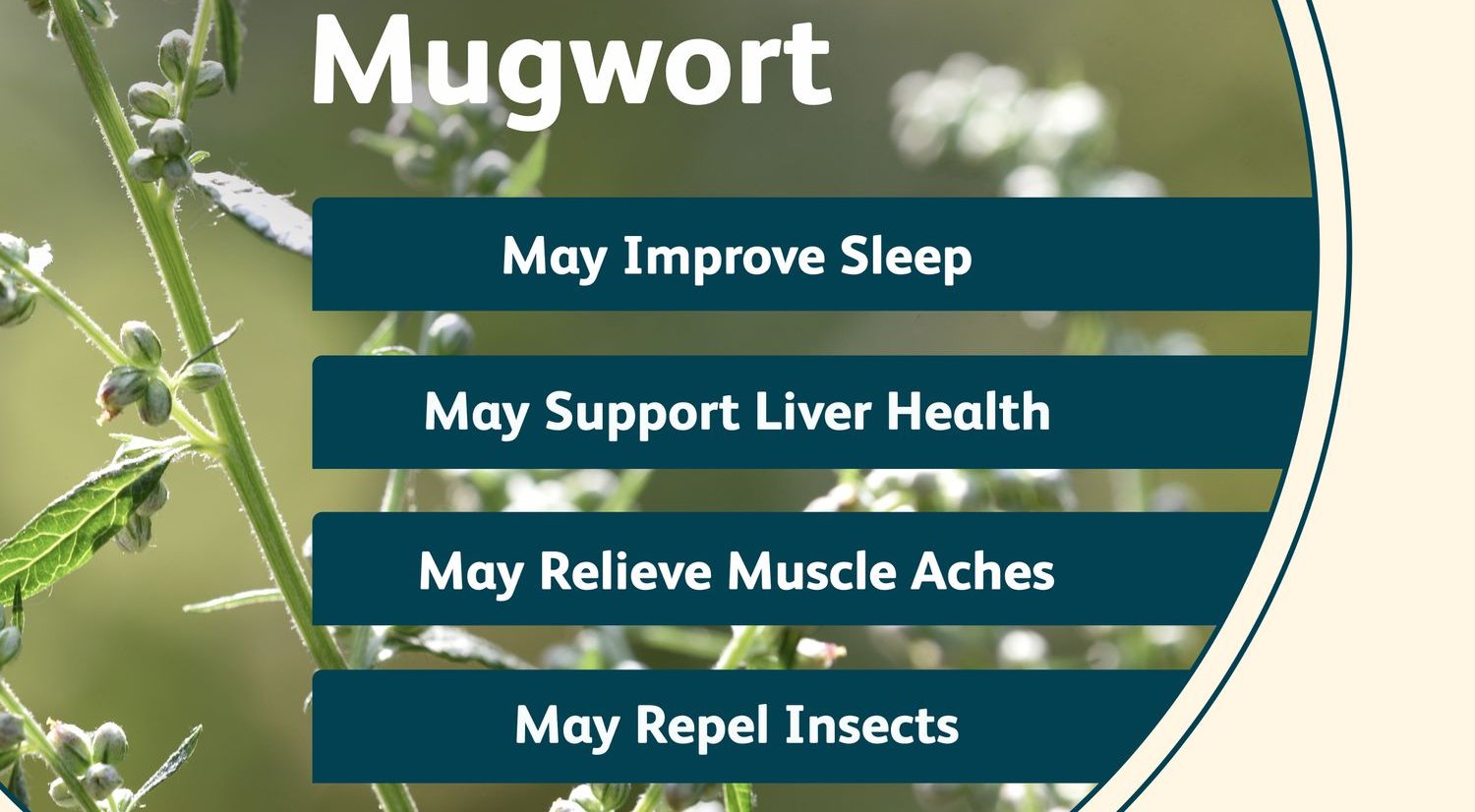by Matt Weik, BS, CSCS, CPT, CSN
When you hear the name “mugwort,” it might sound like something straight out of a Harry Potter potion, but don’t laugh, this plant is used as a supplement for good reason.
This weed-like plant has a long history in ancient Chinese and European medicine, once popular during the Middle Ages as the “mother of herbs.” Today, it still appears in traditional remedies, yellow dyes, insect repellents, and age-old culinary dishes.
Mugwort is a perennial plant found across Europe, Asia, Africa, and North America. Historically, it’s been used to support digestion, regulate menstrual cycles, and soothe itching from raised scars. Some studies suggest it may also have antioxidant, antibacterial, and antifungal properties. But we’ll touch on that shortly.
In this article, we are going to dive deeper into the benefits of mugwort and why it may be something worth supplementing with if you suffer from any ailments that it can help improve.
Disclaimer: This article is for informational purposes only and is not meant to treat or diagnose any condition. It is recommended that you speak with your doctor before starting any exercise program, making changes to your nutrition plan, or adding any new supplements into your current regimen.
What is Mugwort?
Mugwort, also called Artemisia vulgaris, is native to Asia and Europe. It can grow up to 6 feet tall and produces yellow or reddish-brown flowers in the summer. The leaves have a silvery underside and give off a sage-like scent with a slightly bitter taste.
Interestingly enough, Roman soldiers actually placed mugwort in their sandals to help prevent fatigue during long marches (which I wonder why it isn’t used today for our military if it actually works?). It was also believed to offer protection from wild animals and evil spirits (seems like we’re circling back to some Harry Potter hocus pocus).
People used it under pillows to encourage vivid dreams and planted it around homes and gardens to keep moths away.
7 Health Benefits of Mugwort
Here’s the bad news… There have been limited studies on the potential benefits of mugwort for human health. Only a few uses of the plant are backed by science.
But let’s take a look at some of the potential benefits of using mugwort.
1. Moxibustion
Practitioners primarily use mugwort in moxibustion, a technique where the dried herb is burned over specific body areas depending on the treatment goals.
Some healthcare providers today frequently combine moxibustion with acupuncture sessions to enhance the effectiveness of this traditional Chinese medicine approach.
Research indicates that moxibustion may help prevent or turn breech babies into proper head-down positions for delivery. This positioning correction could reduce the number of cesarean sections needed.
A 2012 review found that moxibustion works effectively either by itself or when combined with acupuncture or positioning exercises.
Additionally, a 2019 review showed that women who received moxibustion treatment required less oxytocin during labor compared to those who received no treatment.
Oxytocin plays an important role in childbirth by reducing stress, promoting relaxation, and providing pain relief during labor contractions.
2. It may improve digestion
Mugwort may help with certain digestive issues.
Some studies suggest that when taken orally, it can relax the gastrointestinal tract and bile ducts, leading to increased bile production. This may support food breakdown and movement through the digestive system.
Its smell and bitter taste may also stimulate the release of bile and stomach acid, which aid digestion.
3. It helps with arthritis
A 2017 review identified sufficient evidence supporting the effectiveness of moxibustion in reducing pain and managing symptoms for people suffering from knee osteoarthritis.
These findings build on earlier research from a 2016 review, which suggested that moxibustion could serve as a viable alternative treatment option for managing knee osteoarthritis symptoms.
4. It may help with high blood pressure
Mugwort may help manage high blood pressure by lowering it and improving blood circulation. This effect has been observed through moxibustion, a therapy that involves burning mugwort on or near specific acupuncture points on the body.
Moxibustion is sometimes used together with acupuncture, where thin needles are inserted into these same points.
Research suggests that this approach may support blood pressure control, but further studies are needed to confirm its effectiveness.
5. It may support respiratory functions
Mugwort has been used for centuries to support breathing and lung function through various methods, including ingestion, topical application as poultices, and inhalation.
Current research suggests that mugwort may help lung health by promoting healthy inflammatory responses in the airways.
Scientists believe several plant compounds contribute to these potential benefits, including alkaloids, coumarins, flavonoids, saponins, sterols, tannins, and terpenes.
6. Cancer treatment side effects
A 2018 review examining multiple moxibustion studies found that this practice might help reduce chemotherapy side effects and enhance patient quality of life.
The study authors advised caution regarding California mugwort consumption in any form, including tinctures and teas. They recommended that people avoid using these extracts until researchers better understand the safety profile of this particular variety.
7. Antibacterial and antifungal
Studies have found that mugwort has antibacterial and antifungal properties.
One study showed that mugwort essential oil helped eliminate Candida, a common fungus that can cause infections in the mouth, throat, esophagus, vagina, and bloodstream.
Another study found that essential oil from the plant’s leaves and stems was effective against various bacteria and fungi, including E. coli and Salmonella enteritidis.
However, because mugwort grows in many regions, the composition of its essential oil can vary. As a result, the properties of one bottle may differ from another depending on where the plant was grown.



